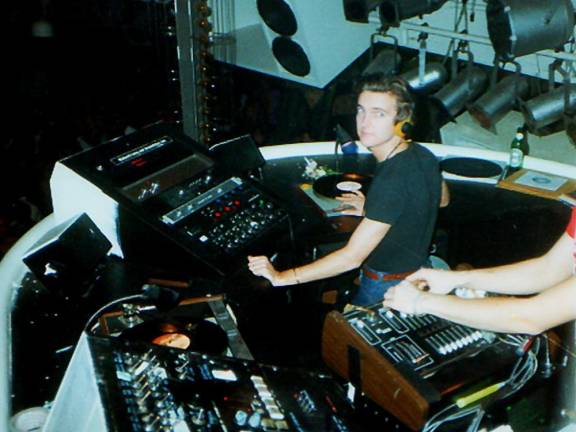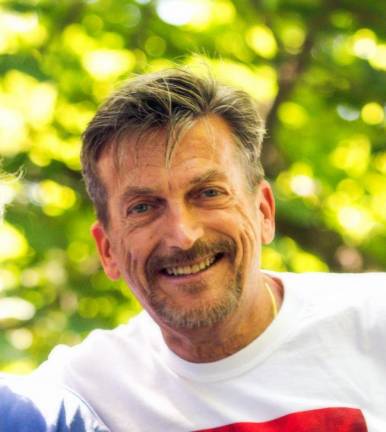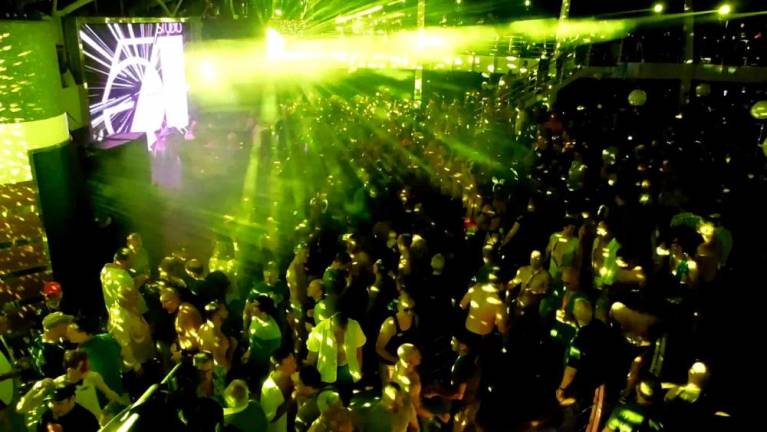A Different Spin on Manhattan’s Golden Age of Disco
Quintessential New York DJ Robbie Leslie on the disco era in the city



Robbie Leslie’s name is synonymous with disco in New York. The renowned DJ has spun all over the city — most notably Studio 54 in the early ‘80s, and those experiences led him to provide the soundtrack to dance floors all around the world.
The Maine native moved to Manhattan in 1979 and gave himself a six-month window to find a DJ job here that would play the bills. After landing his first gig at 12 West, a club along the West High Sideway, he was on the path to fame in the industry. “That was a very auspicious beginning for Manhattan — to start at a club that popular and prestigious,” he explained. The disco veteran has been in the DJ booth everywhere, from small, high end international clubs to huge raves and retro-themed parties. His fascinating resume include spinning for a crowd of 12,000 at the Pier Dance, the largest fundraiser for NYC Pride, and playing the last four hours of the 40-hour closing party of The Saint in the East Village.
When asked about the secret to his success, Leslie noted that a good DJ has to be an adept crowd reader, because in his profession, one can never plan in advance. “You’re watching constantly how each song is being received by the crowd,” he said. Now, 40 years later, he still gets butterflies in his stomach when he’s prepping for a show and is excited for the renewed interest in disco and bringing that music to younger generations. “Because of my association with Studio 54 and that pedigree, I’m often hired to do parties that use that format,” he explained. “I love sharing that music with people of different generations. They usually respond beautifully to it because it’s still high quality music.”
This summer, Leslie will be celebrating his 10th anniversary as a resident DJ with SiriusXM, where he hosts “Robbie Leslie Presents” a weekly show on their dance music channel, Studio 54 Radio. On April 11, he will participate in New York Music Month Extended Play hosted by the Mayor’s Office of Media and Entertainment. His contribution will be a workshop titled Disco Discourse, “an in-depth conversation with former employees of the iconic Studio 54 tracing their influence on queer nightlife, and their transformation into a music label.”
When did you know you would make a career in DJing?
I got into working in bars as a waiter or bartender and then I just serendipitously asked if I could play and experiment at this place that was off season and they would play tapes anyway, so they didn’t really have a DJ that I was taking the place of. And they said, “Sure, as long as you don’t drive the customers out. Do your best.” That was on Fire Island at a club called the Sandpiper. I worked there from 1975 to 1979, when it actually closed for good. I was hired to be a waiter there. It was one of the most influential clubs for early disco. They were testing marketing records like Barry White, Love Unlimited Orchestra, Gloria Gaynor- huge, initial artists of the early disco period. Being that it’s so close to New York City and it’s kind of like a resort town, it had a very discriminating, sophisticated audience. They had very, very good DJs who worked there, so I got to listen to them all. I was like being spoon-fed this amazing music. So after Labor Day, when all the other DJs went back to the city, that’s when I tried it out myself. I was living in a dormitory, right above the dance floor. I mean I couldn’t sleep anyway, so I would be downstairs during disco hours.
What was the scene like at 12 West, your first gig in Manhattan? Was it mostly people coming from Manhattan or the outer boroughs?
I would say probably mostly Manhattan. But it was a very democratic door policy. It was nothing like Studio [54]. If you were there to dance and have a good time, then you were welcome. It was very much, because it was right in the Village, it was a very welcoming, friendly scene. It was pretty much attended by people who were totally devoted to and really loved that music. They spared no expense to install a wonderful sound system and hired great DJs. I’m not saying myself. Before me, they hired great DJs. [Laughs] It would hold about five to seven hundred comfortably, so it was a good-sized place, very minimalistic. It was all about the music, truly.
You started working at Studio 54 in 1980. What was its door policy like?
The door at Studio is the thing of legend. People still have trouble processing this odd and very contrary policy. But it did work, because it made the people inside feel remarkably special and really euphoric. It wasn’t just the same old, same old. Some nights it was a completely different crowd. You really never knew what kind of demographics were going to be in the club. I principally worked on Thursdays and Sundays, and occasionally, on the weekends. But people would hear that and say, “That’s kind of like the off night.” But, believe me, it was not the off night. But the door just amped up the energy and the rush of being inside and part of these chosen ones. It was a very homogenized group - everyone from waiters at diners, bartenders and clerks and window dressers at Bloomingdales and then on the other side of the spectrum, you’d have these super celebrities. People weren’t sequestered away, so I remember dancing on the dance floor and Marisa Berenson would just sashay by. You just never knew who you’d bump into.
Who were some of the celebrities you ran into there?
Let’s see, I saw Rod Stewart, Sylvester Stallone, Liza Minnelli, Halston, Andy Warhol, Erik Estrada. I met Christina Onassis one night. Truman Capote, I think I saw him from a distance but I never actually spoke to him. Michael Jackson.
Were there ever any security issues?
No, there really weren’t, remarkably. It was a different era, I suppose, and this I think had something to do with who they were picking and choosing inside. If you were in the mindset where you weren’t one of these celebrity hounds or stalkers or what have you. I guess a certain personality type that goes gaga over a big name or well-known face, maybe they were just able to whittle that out. At the end, it was all very casual and cavalier as far as how we interacted, which was part of the beauty of it.
What are some of the songs you have the most fun playing for the crowd?
Well, it depends on the audience, of course. I know how to make a room scream. It really depends on the room and the demographics. If it was a ‘70s party, Brainstorm is a favorite group of mine. Two Tons O’ Fun are great. Everyone loves Sylvester. To this day, he still will fill floors. And then of course, in the ‘80s, the music changed radically. You were getting more artists as opposed to studio groups and that was very good, because that was more sustainable. And in the ‘90s, again, another shift, when it wasn’t really profitable to go into the studio and record albums, so a lot of producers were making things on their own using computers. It never gets stale. People think disco all sounds alike, but believe me, it really doesn’t at all.
To learn more, visit www.robbieleslie.com and www.nymusicmonth.nyc.